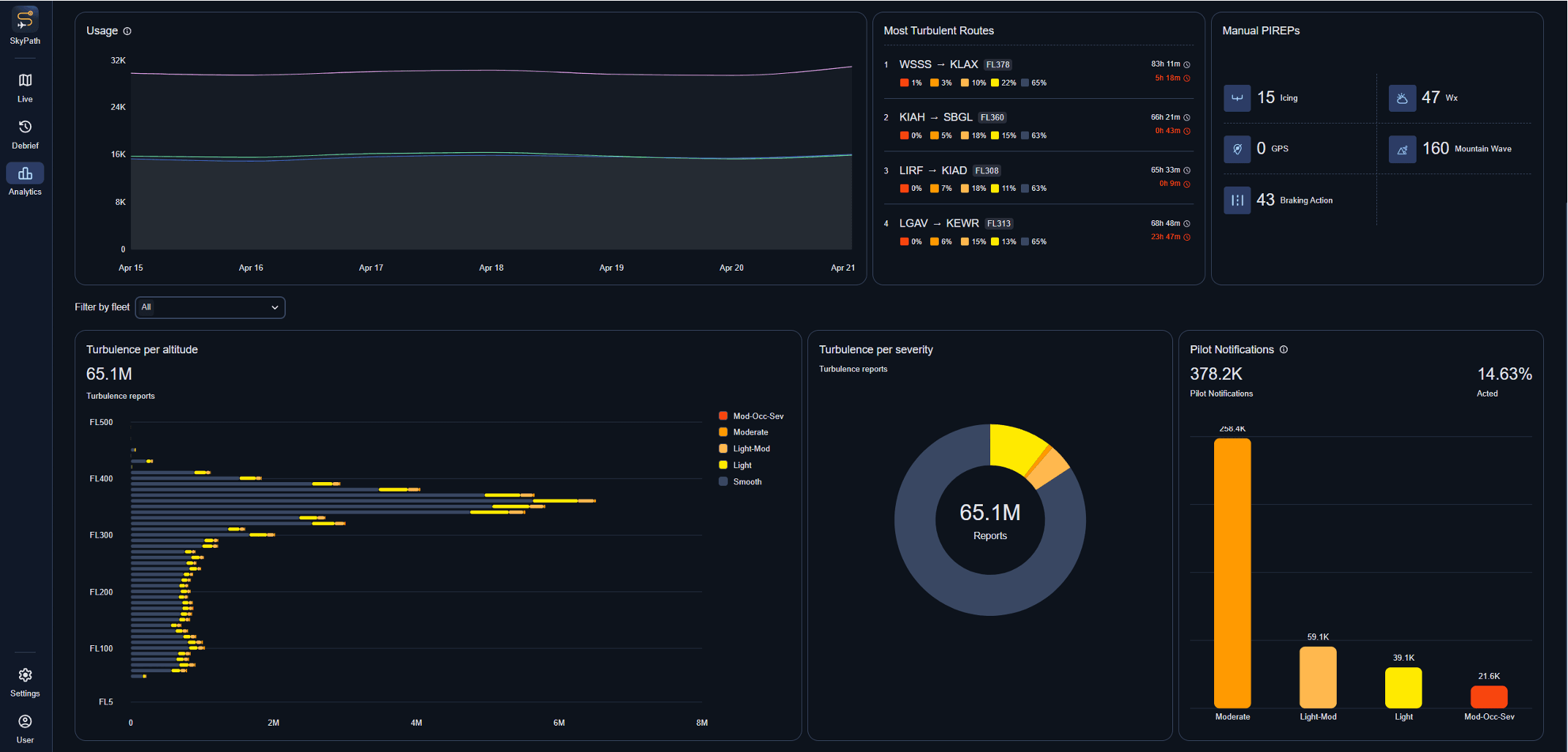Turbulence remains the leading cause of in-flight injuries across commercial aviation. While aircraft structures are rarely at risk, crews and passengers continue to face unnecessary hazards when turbulence goes untracked, underreported, or poorly understood.
SkyPath Analytics & Debrief offers airlines the ability to close this gap by turning turbulence experiences into clear, actionable intelligence. The outcome is a measurable reduction in injury risk and an operational culture rooted in data-driven decisions.

A Fleet-Wide View of Turbulence
The SkyPath Analytics Dashboard provides airline management, safety, and risk teams with a consolidated view of turbulence trends across their fleets. Accessible within the SkyPath web app, the dashboard highlights:
- The frequency and severity of turbulence events
- Which routes consistently present higher turbulence risks
- The distribution of turbulence across different altitudes
- The rate at which pilots receive real-time turbulence notifications and how often they act on them
- The level of airline-wide engagement with SkyPath over time, including flight coverage and user adoption
This comprehensive view allows stakeholders to benchmark exposure, monitor operations, and align proactive strategies that reduce turbulence-related incidents.
Learning From Every Flight
The SkyPath Debrief Tool complements the dashboard by enabling teams to review historical flight data for post-event analysis. Safety managers can search for a specific flight, view the turbulence recorded during that journey, and examine the data layers available to pilots at the time. Debrief mode also shows which notifications SkyPath issued for upcoming turbulence, ensuring airlines can understand both the event and the crew actions taken in response.
All flight-level data is restricted to the airline itself, with world-map overviews fully anonymized to protect data privacy. This ensures operators gain maximum insights while maintaining full control of their operational information.
Key Use Cases for Airlines
Airlines adopting SkyPath’s Analytics & Debrief can apply the system across multiple operational, safety, and training needs:
- Identify turbulence trends over time to guide long-term safety policies and adjust operational plans.
- Support event investigations with precise records of what data was available to pilots and what notifications they received.
- Assess pilot engagement with SkyPath notifications, enabling safety managers to strengthen training where required.
- Track adoption across the fleet by reviewing how many devices, users, and flights actively engage with the platform.
A Safer, More Transparent Operation
By connecting real-time notifications with post-flight analysis, SkyPath helps airlines not only navigate turbulence in the air but also learn from every encounter afterward. This continuous feedback loop ensures safety teams, managers, and crews share the same transparent data foundation, supporting decisions that safeguard passengers and crews while enhancing operational efficiency.
